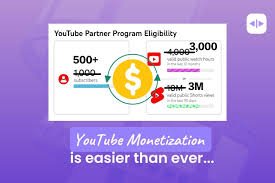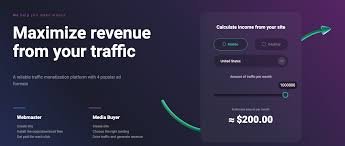Affiliate marketing is one of the most accessible and profitable ways to monetize your website. Whether you’re a blogger, content creator, or e-commerce entrepreneur, affiliate marketing allows you to earn revenue by promoting other people’s products or services. But how exactly do you get started, and what are the best practices for success?
In this Affiliate Marketing 101 guide, we’ll walk you through the basics of affiliate marketing and show you how to start earning revenue from your website today.
What is Affiliate Marketing?
Affiliate marketing is a performance-based marketing strategy where you earn commissions for referring customers to a company’s product or service. Essentially, you partner with a brand or business and promote their offerings. Every time someone clicks on your affiliate link and makes a purchase, you earn a commission—often without having to handle the product or deal with customer service.
For example, when you recommend a product on your blog or social media and a reader clicks your link to buy it, you earn a percentage of the sale. It’s that simple.
Why Affiliate Marketing is a Great Choice
Affiliate marketing offers multiple benefits, including:
- Low Start-Up Costs: You don’t need to create a product, manage inventory, or deal with customer service.
- Passive Income: Once you set up your affiliate links, you can continue earning money without ongoing effort.
- Flexibility: You can work from anywhere and promote a variety of products that align with your niche.
- Scalability: As your website or blog grows, so does your affiliate revenue potential. More traffic means more clicks and commissions.
How to Get Started with Affiliate Marketing
Starting affiliate marketing doesn’t require any advanced skills. Here’s a step-by-step guide to help you get started:
1. Choose the Right Niche for Your Website
The first step to affiliate marketing success is choosing a niche that aligns with your interests and expertise. This will help you attract an audience that trusts your recommendations and is more likely to purchase through your affiliate links.
If you’re running a lifestyle blog, for example, you might focus on niches like health and fitness, home decor, or fashion. A tech blog might promote gadgets, software, or online courses.
2. Find Affiliate Programs
Once you’ve established your niche, the next step is to find affiliate programs that offer products or services that fit your audience. Many brands and companies offer affiliate programs, and there are several affiliate networks that connect marketers with merchants.
Popular affiliate networks include:
- Amazon Associates: One of the largest and most popular affiliate programs with a wide range of products.
- ShareASale: Offers affiliates access to thousands of merchants in various niches.
- Rakuten Marketing: Works with top global brands.
- CJ Affiliate: Provides access to a diverse range of products and services.
- ClickBank: Specializes in digital products, such as eBooks and online courses.
When choosing an affiliate program, consider the commission rates, the reputation of the company, and how well their products align with your audience’s interests.

3. Create Valuable, Engaging Content
Affiliate marketing thrives on trust. To build that trust, you need to create content that resonates with your audience. This could be in the form of blog posts, product reviews, tutorials, videos, or even social media posts. The key is to provide value while subtly incorporating affiliate links.
Types of content that work well for affiliate marketing:
- Product Reviews: Share your honest thoughts on products you’ve used. Make sure to explain how the product solves a problem for your audience.
- How-To Guides and Tutorials: Provide step-by-step instructions on using a product or service, and include affiliate links where relevant.
- Listicles: Curate lists of recommended products or services in a specific niche, with affiliate links for each.
- Case Studies: Showcase how a product helped you or someone else achieve a goal.
Remember, the more helpful and informative your content is, the more likely your audience will click on your affiliate links and make a purchase.
4. Use Affiliate Links Strategically
Once you have your affiliate links, you need to use them in your content without being overly promotional. Avoid spamming your posts with links—this can turn off your readers. Instead, incorporate them naturally within your content, and make sure they fit the context of the post.
Here are some tips for using affiliate links effectively:
- Use clear, compelling calls to action (CTA). For example, “Click here to grab your [product name] at a discounted price!”
- Place links in relevant sections of the content (e.g., product reviews, recommendations, or resource lists).
- Add affiliate links to high-traffic pages or blog posts for maximum exposure.
- Don’t forget to disclose your affiliate relationship. Be transparent with your audience by adding a disclaimer or a note like, “This post contains affiliate links, which means I may earn a small commission if you purchase through my links.”
5. Track and Optimize Your Performance
To ensure you’re maximizing your affiliate earnings, it’s important to track your performance. Most affiliate programs and networks offer detailed dashboards that allow you to see how many clicks, conversions, and commissions you’re earning.
By analyzing this data, you can optimize your strategy. For example:
- Identify top-performing links: If certain products or categories are generating more revenue, consider creating more content around them.
- A/B testing: Try different placements or styles for your affiliate links to see what performs best.
6. Promote Your Content
Creating great content is only half the battle. To drive traffic to your website and affiliate links, you need to promote your content through various channels. Some popular methods for driving traffic include:
- SEO (Search Engine Optimization): Optimize your content for search engines to rank higher and attract organic traffic.
- Email Marketing: Build an email list and send valuable content along with your affiliate recommendations.
- Social Media: Share your posts on social media platforms like Instagram, Facebook, Pinterest, or Twitter to reach a broader audience.

Best Practices for Affiliate Marketing Success
- Be Authentic: Always promote products that you genuinely believe will benefit your audience.
- Focus on Quality, Not Quantity: It’s better to promote a few well-chosen products that align with your niche rather than overloading your audience with options.
- Build Relationships with Brands: Long-term partnerships with brands can lead to higher commissions and more exclusive offers for your audience.
Conclusion
Affiliate marketing is a great way to monetize your website and start earning passive income. By choosing the right niche, selecting reputable affiliate programs, and creating high-quality, engaging content, you can turn your website into a source of consistent revenue. Keep track of your performance, optimize your strategies, and remember that affiliate marketing takes time and effort to yield substantial results. But with patience and persistence, you can reap the rewards and enjoy the benefits of a sustainable online income.
Related Tags:
- Affiliate Marketing
- How to Start Affiliate Marketing
- Website Monetization
- Earn Money Online
- Passive Income
- Product Reviews
- Affiliate Links
- Marketing Strategies
- SEO for Affiliate Marketing
- Digital Marketing
- Earn Money with Affiliate Marketing













